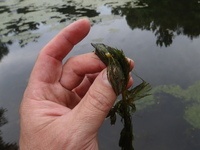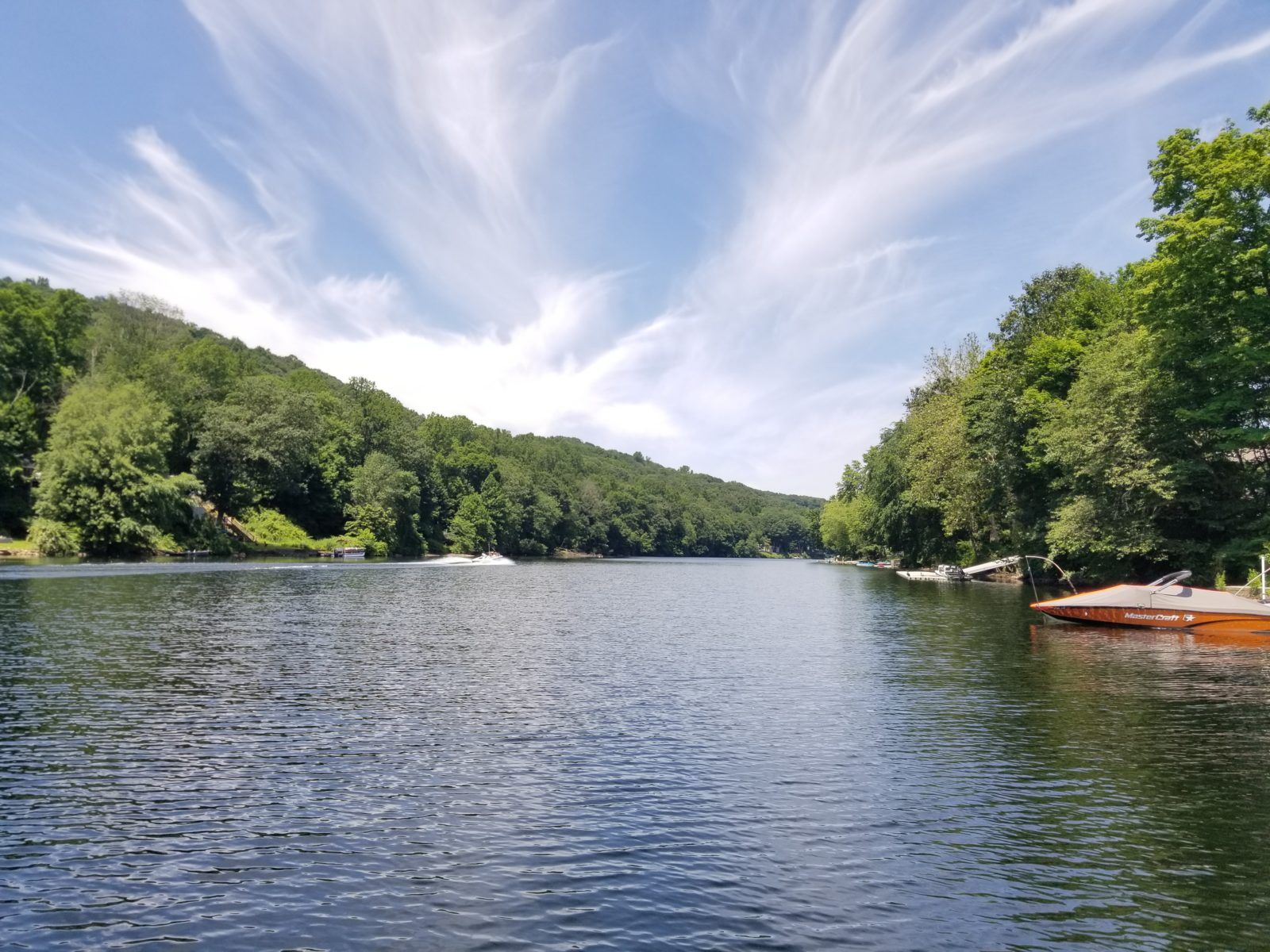Nuisance Aquatic Plant Highlight: Fanwort
October 23rd, 2017
 What’s purple and green, with a little white flower? Fanwort: it’s a competitive aquatic plant that grows in dense mat-forming patches. Its submersed leaves are its name-sake — dissected into a thin, flat fan-shaped display. The submersed leaves grow approximately 5 cm across and appear in opposite pairings on the stem. Small, diamond-shaped floating leaves are sometimes present at maturity, growing up to 3 cm long, but only 4 mm wide. The 3-petaled flower is inconspicuous and typically blossoms right at the water’s surface.
What’s purple and green, with a little white flower? Fanwort: it’s a competitive aquatic plant that grows in dense mat-forming patches. Its submersed leaves are its name-sake — dissected into a thin, flat fan-shaped display. The submersed leaves grow approximately 5 cm across and appear in opposite pairings on the stem. Small, diamond-shaped floating leaves are sometimes present at maturity, growing up to 3 cm long, but only 4 mm wide. The 3-petaled flower is inconspicuous and typically blossoms right at the water’s surface.
To date, fanwort occurs in 28 U.S. states, of which 12 consider the nuisance plant a non-native. Vermont remains the only New England state free of fanwort. While native to the southern United States and Latin America, fanwort is commonly managed for nuisance growth. Other plant species present within the waterbody are often ‘choked out’ or inhibited from growing due to fanwort’s aggressive nature. As with all unbalanced growth, it negatively alters aquatic habitats and species relationships, and established infestations can be extremely challenging to eradicate.
Like invasive milfoils, fanwort can vegetatively reproduce by fragmentation, in addition to an innate ability to self-pollinate. Seeds are formed and released after the plant flowers, enabling fanwort to overwinter consistently within its northern range. Both fragments and seeds can be transported by water flow, wildlife, recreational supplies and equipment, and undue negligence.
 Fanwort can grow in oligotrophic to eutrophic environments, and withstand wide ranges of pH and temperature. Stems have been documented most commonly at depths up to 3 meters, but reported to occur at depths up to 10 meters. While hardy, flow often deters growth and limits fanwort to quiet aquatic ecosystems, like streams, lakes and ponds.
Fanwort can grow in oligotrophic to eutrophic environments, and withstand wide ranges of pH and temperature. Stems have been documented most commonly at depths up to 3 meters, but reported to occur at depths up to 10 meters. While hardy, flow often deters growth and limits fanwort to quiet aquatic ecosystems, like streams, lakes and ponds.
Invasive and nuisance plant growth directly harms our economy (tourism, real estate values, etc.) and the ecosystem. Spread of fanwort can be prevented through the removal of pond material from recreation equipment before leaving and entering a waterbody. Control is most effectively achieved through herbicide application; however, drawdown practices and hand-removal have been utilized to success in smaller infestations. As with any invasive, preventative lake and pond management is key.
Contact the experts at 888-480-5253 for all of your lake, pond, wetland and fisheries management needs.
SOLitude Lake Management is committed to providing full service lake and pond management solutions that improve water quality, preserve natural resources, and reduce our environmental footprint. Our services include lake, pond and fisheries management programs, algae and aquatic weed control, mechanical harvesting, hydro-raking, installation and maintenance of fountains and aeration systems, water quality testing and restoration, bathymetry, lake vegetation studies, biological assessments, habitat assessments, invasive species management and nuisance wildlife management. Services, consulting and aquatic products are available to clients nationwide, including homeowners associations, multi-family and apartment communities, golf courses, commercial developments, ranches, private landowners, reservoirs, recreational and public lakes, municipalities, parks, and state and federal agencies. Learn more about SOLitude Lake Management and purchase products at www.solitudelakemanagement.com.










